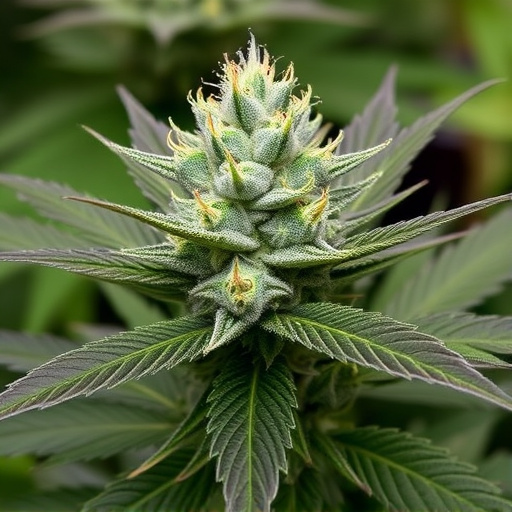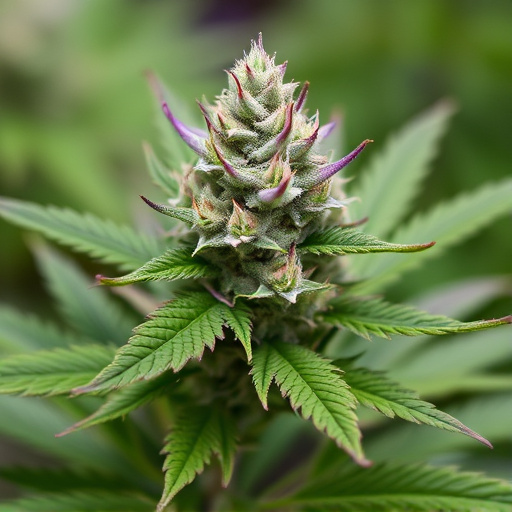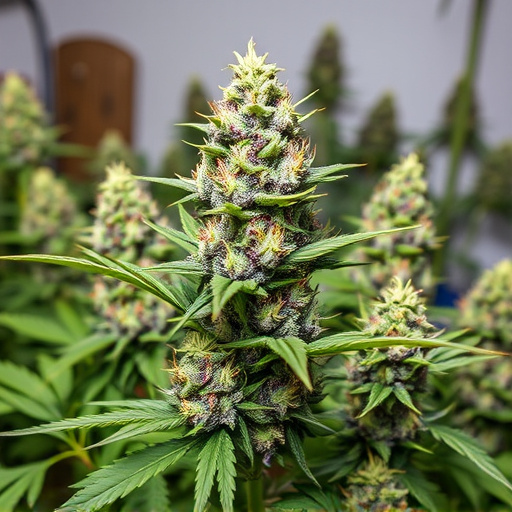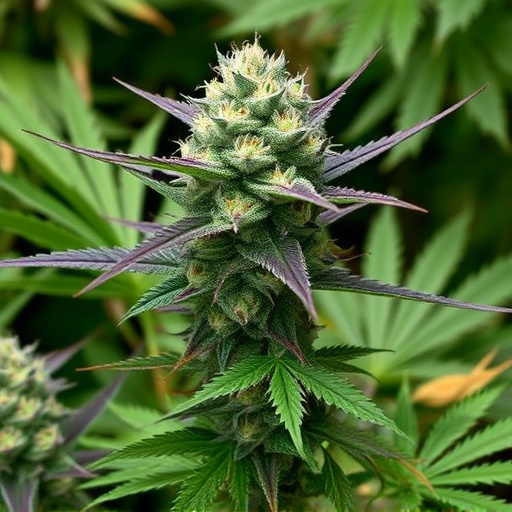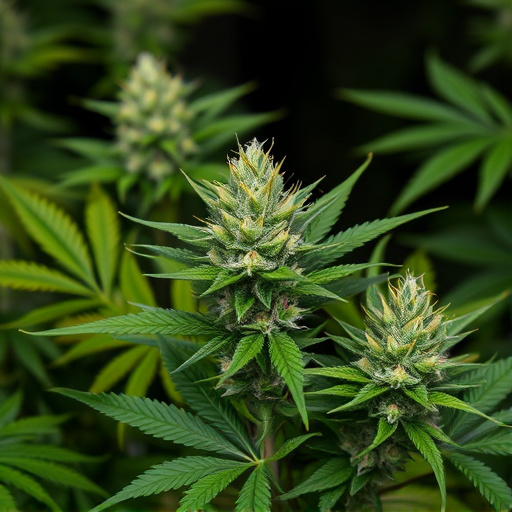While medical marijuana strains offer potential benefits, they carry risks, especially with regular use during adolescence and early adulthood, which can increase psychotic disorder risks. Smoking cannabis exposes users to harmful chemicals and tar, potentially causing respiratory issues. Heavy use may impact memory, attention, and decision-making abilities. Interactions with other medications, such as sedatives and antidepressants, should be carefully considered. Side effects like dry mouth and anxiety are common; starting with lower doses and consulting healthcare providers is crucial for safe consumption. Best practices include tracking dosages, exploring alternative consumption methods, and maintaining open communication about concerns.
“Unveiling the potential risks associated with cannabis flower is essential, especially as its popularity surges in the medical marijuana market. While many advocate for its therapeutic benefits, understanding the side effects and health hazards is crucial for informed decision-making. This article explores the various risks, from short-term side effects to long-term consequences, focusing on medical marijuana strains. By shedding light on these considerations, we aim to empower users to navigate the world of cannabis with safety and caution.”
- Potential Health Risks of Cannabis Flower Consumption
- Side Effects and Interactions to Be Aware Of
- Mitigating Risks: Safe Use Practices for Medical Marijuana Strains
Potential Health Risks of Cannabis Flower Consumption

While many advocate for medical marijuana strains due to their potential therapeutic benefits, it’s crucial to acknowledge the risks associated with cannabis flower consumption. One significant concern is the impact on mental health. Regular use, especially in adolescents and young adults, has been linked to increased risks of developing psychotic disorders, such as schizophrenia. This is particularly true for individuals predisposed to these conditions or those consuming high-potency strains.
Additionally, cannabis use can lead to respiratory issues due to the inhalation of smoke, which may contain harmful chemicals and tar. The long-term effects include chronic bronchitis and reduced lung function. Furthermore, there are concerns about the potential impact on memory and cognitive functions, especially with frequent and heavy use. Studies suggest that it can impair short-term memory, attention, and decision-making abilities, particularly in young people whose brains are still developing.
Side Effects and Interactions to Be Aware Of

Using medical marijuana strains comes with an understanding of potential side effects and interactions that may arise. Like any medication, cannabis can interact with other substances, including over-the-counter drugs and prescription medications, leading to unforeseen consequences. For instance, it can enhance the effects of sedatives and antihistamines, causing excessive drowsiness or dizziness. Additionally, individuals taking antidepressants or anti-anxiety meds should exercise caution, as cannabis may intensify their effects, potentially resulting in impaired coordination and altered perception.
Beyond these interactions, consuming medical marijuana strains may lead to various side effects, especially when consumed in higher amounts or by inexperienced users. Common symptoms include dry mouth, red eyes, increased appetite, and a heightened sense of relaxation that can sometimes veer into sedative territory. In some cases, users might experience anxiety or paranoia, particularly with potent strains. Being mindful of one’s tolerance and starting with lower doses is crucial to mitigate these risks.
Mitigating Risks: Safe Use Practices for Medical Marijuana Strains

To mitigate risks associated with medical marijuana strains, it’s essential to adhere to safe use practices. Patients should always consult with a qualified healthcare provider or specialist who can offer guidance tailored to their specific needs and conditions. Following recommended dosages and starting with low concentrations is crucial to avoid adverse effects. Consuming cannabis in various forms, such as capsules or edibles, allows for more precise dosing compared to smoking or vaping.
Additionally, maintaining a consistent routine and tracking the effects of different strains can help patients understand their tolerance levels and preferred methods of consumption. Storing cannabis properly, away from direct sunlight and moisture, ensures potency and quality. By combining these practices with open communication about any concerns or side effects, individuals can safely navigate the use of medical marijuana strains while reaping potential therapeutic benefits.
While medical marijuana strains offer significant therapeutic benefits, it’s crucial to acknowledge and understand the potential risks associated with cannabis flower consumption. By being aware of side effects, interactions, and safe use practices, individuals can navigate these risks effectively. Responsible usage, education, and professional guidance are essential to maximizing the benefits while minimizing adverse outcomes, ensuring a safer experience for those leveraging medical marijuana for treatment purposes.



